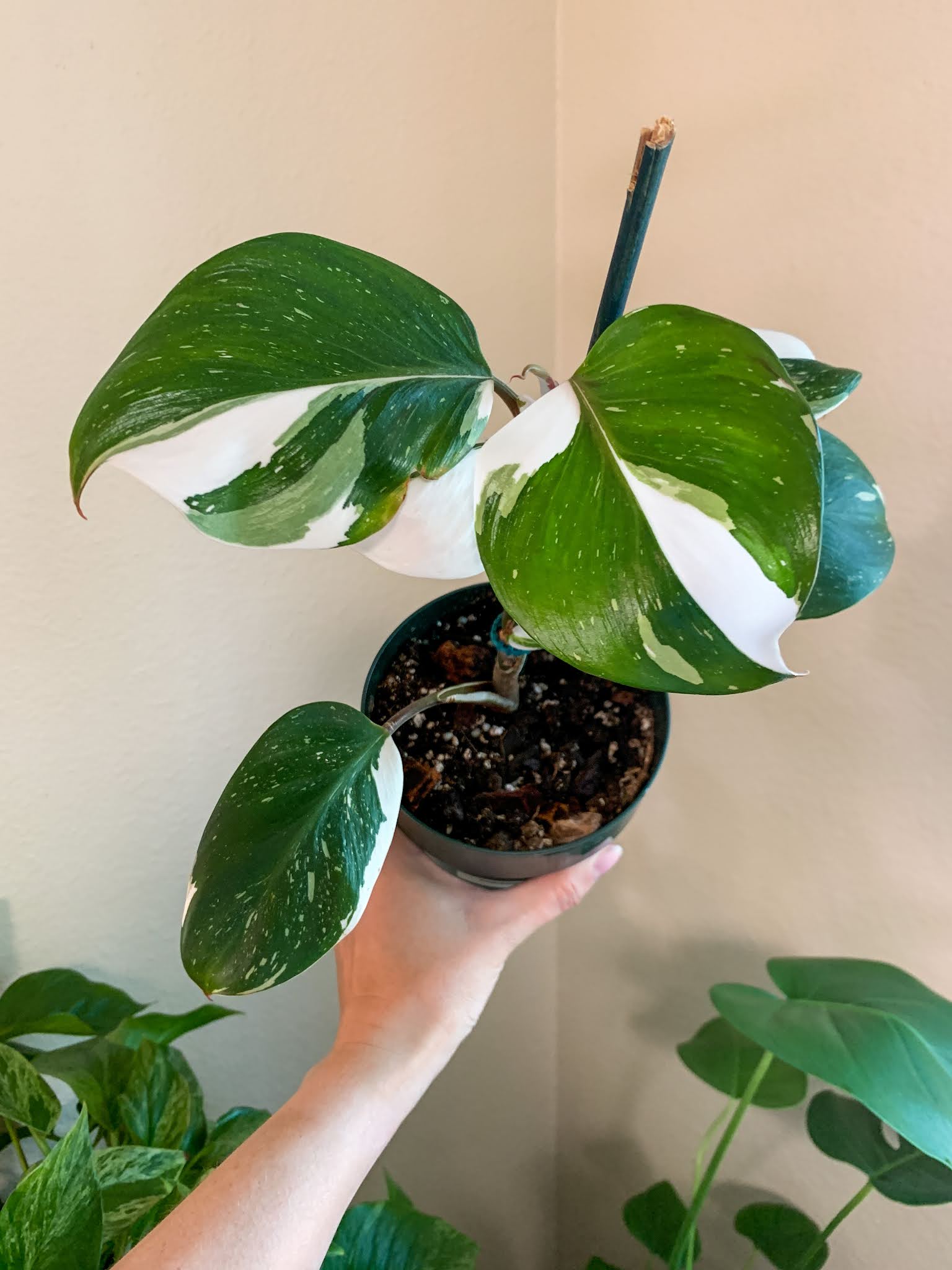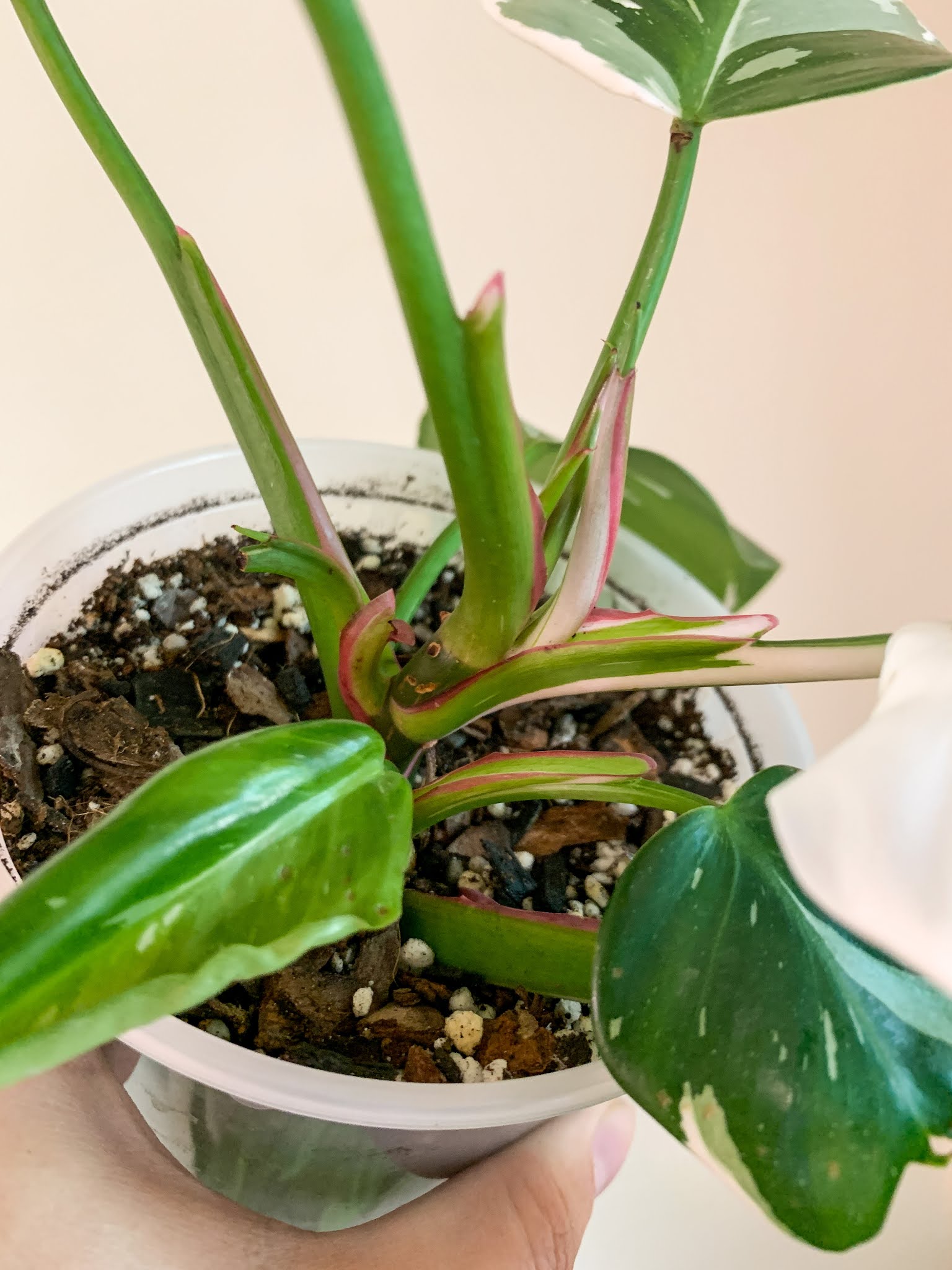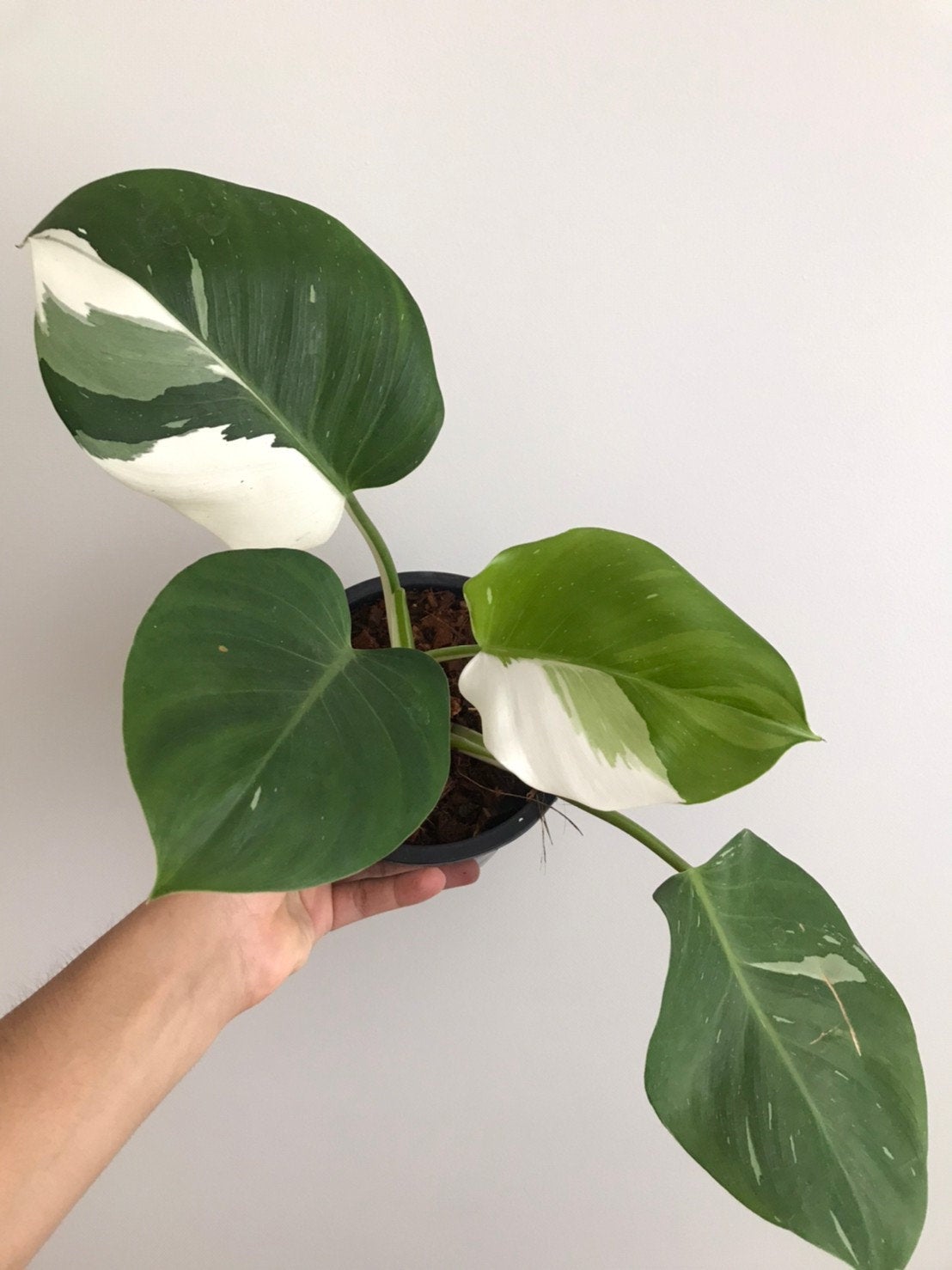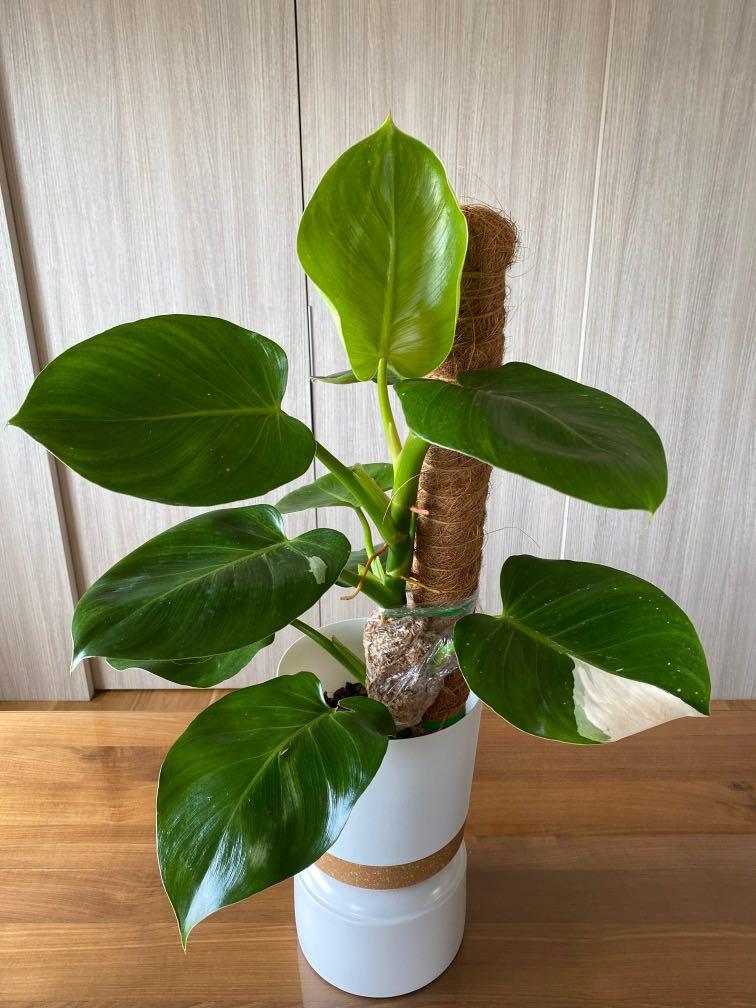
If you love collecting rare philodendrons, then you've no doubt come across the likes of the Philodendron White Knight, P. White Princess, and P. White Wizard, each of which sports beautiful white variegation on their emerald-colored leaves. But what's the difference between them?
The confusion stems in large part from the rate at which sellers and collectors alike misidentify these similar-looking plants. The foliage itself can look nearly identical in color and shape from one species to another, especially when the plant is in a very juvenile stage.
Luckily for us, there is actually a very easy way to tell the difference between each plant in this "royal court" of philodendrons, no matter the plant's age or variegation. It's all in the stem!
Let's take a look at each plant below.
Philodendron White Knight

Out of these three plants, the Philodendron White Knight is probably the easiest to identify. This plant is characterized by a striking brownish-burgundy stem & petioles edged with white on the cataphyll. In short, if the stem is not green, it is not a white princess or white wizard.
The leaves of the white knight can vary in terms of variegation. Sometimes it has huge patches of white, sometimes it is splashy and constellation-like, and sometimes the plant alternates between putting out all green and all white leaves. The type of variegation you get may just come down to the genetics of your individual plant as well as your growing conditions and care routine.
In general, though, the white knight has a more rounded leaf shape than the white princess but smaller leaves than the white wizard. It is also a climber, meaning that it will vine and grow upwards if you give it proper support.

Philodendron White Princess

The white princess possesses a bright green stem edged with pink and sometimes also white on the cataphyll and throughout the stem itself. Like all three plants on this list, it is a climber.
This plant is special in that its variegation is mostly white, but every now and then it might surprise you with a patch of pink just like a Philodendron Pink Princess! I've managed to get my white princess to produce all pink stems and petioles by exposing it to high lighting. I find the white princess to be the most "splashy" and constellation-like in its patterning, although that doesn't mean that the coloring can't still come in "patchy" (a.k.a. sectoral).
White princesses typically have longer and more narrow leaves than both the white knight and white wizard. While they may become more rounded and paddle-like in maturity, I still find that the leaves remain a bit more pointy at the end than the other two.
 |
| Closeup of the stems on my Philodendron White Princess. Note the pink and white accent coloring. |
Philodendron White Wizard

Compared to the white knight and white princess, the Philodendron White Wizard has definitely been the toughest plant for me to find as a collector (EDIT: Ha! I originally wrote this blog post in 2021. At the time, white wizard was a difficult plant to find, but thanks to an influx of tissue culture plants, white wizard is now pretty easy to find & very affordable. Same with white knight and white princess.). The white wizard has a completely green stem oftentimes edged in white or containing stripes of white variegation on the stem itself. In fact, you will never find any other colors on this plant, so if you see any pink or dark burgundy anywhere, you know you're looking at a different plant.
White wizard leaves are the largest and roundest, with splashy variegation occurring only rarely. Generally, the variegation in white wizards presents as sectoral, or as large patches. I personally love this type of variegation. The contrast it creates is just beautiful.
I also find that the white wizard has the least amount of white variegation of the three plants, but when you do get variegation it's just... mwah! Chef's kiss.
Like the others, the white wizard is also a climbing plant that would greatly appreciate a wooden stake or moss pole in order to grow and produce its characteristic large leaves.
Since I only have a baby specimen, here's a photo from the Internet of a more mature plant:
 |
| Photo of a more mature P. White Wizard courtesy of Etsy |
 |
| Another photo of a mature P. White Wizard. Note the green stem; it can be completely green or green and white. Photo courtesy of Carousell. |
And there you have it! Everything you need to know in order to correctly identify each of these plants (and not fall victim to a misidentification).
Don't get me wrong, owning any of these plants is a delight, so discovering the white princess you bought is actually a white knight is hardly the end of the world. But once you know the difference, you may find yourself truly surprised by how often these plants are still being mixed up online and on social media.
They truly are stunning philodendrons, and collecting them, while expensive, can be well worth the investment. Prices are also slowly beginning to fall on them as more and more people propagate and grow them, so if these plants are still out of your budget you may have your chance soon!
Was this post helpful? Consider sharing it with your friends and fellow plant lovers on social media!



Soooo helpful! Thank you very much!!!
ReplyDeleteGreat blog!!! It's so informative, supper helpful
ReplyDelete